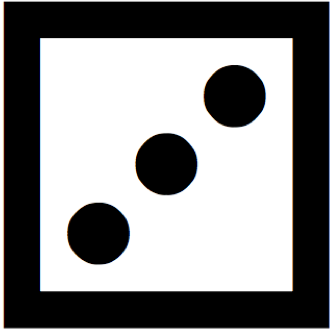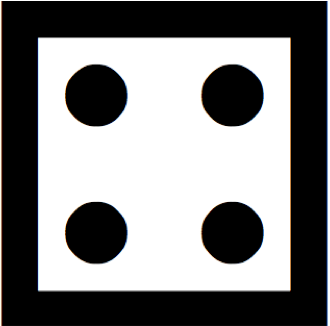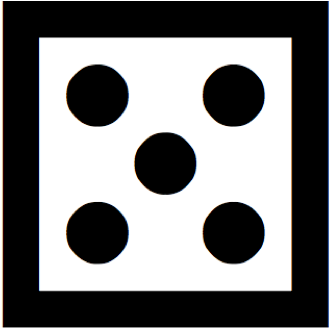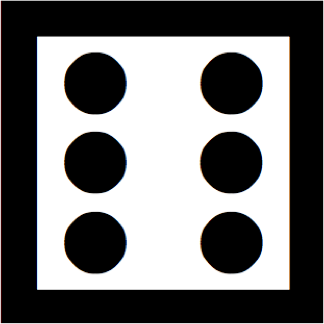















































































































































None
2,1 2,2 2,3 2,4 2,5 2,6
3,1 3,2 3,3 3,4 3,5 3,6
4,1 4,2 4,3 4,4 4,5 4,6
5,1 5,2 5,3 5,4 5,5 5,6
6,1 6,2 6,3 6,4 6,5 6,6
Contains...
1 2 3 4 5 6
Dice sum to...
2 3 4 5 6 7 8 9 10 11 12
Sum is less than...
3 4 5 6 7 8 9 10 11 12 13
Sum is greater than...
1 2 3 4 5 6 7 8 9 10 11
Sum is even Sum is odd
Event 2:
None
2,1 2,2 2,3 2,4 2,5 2,6
3,1 3,2 3,3 3,4 3,5 3,6
4,1 4,2 4,3 4,4 4,5 4,6
5,1 5,2 5,3 5,4 5,5 5,6
6,1 6,2 6,3 6,4 6,5 6,6
Contains...
1 2 3 4 5 6
Dice sum to...
2 3 4 5 6 7 8 9 10 11 12
Sum is less than...
3 4 5 6 7 8 9 10 11 12 13
Sum is greater than...
1 2 3 4 5 6 7 8 9 10 11
Sum is even Sum is odd
Condition:
None
2,1 2,2 2,3 2,4 2,5 2,6
3,1 3,2 3,3 3,4 3,5 3,6
4,1 4,2 4,3 4,4 4,5 4,6
5,1 5,2 5,3 5,4 5,5 5,6
6,1 6,2 6,3 6,4 6,5 6,6
Contains...
1 2 3 4 5 6
Dice sum to...
2 3 4 5 6 7 8 9 10 11 12
Sum is less than...
3 4 5 6 7 8 9 10 11 12 13
Sum is greater than...
1 2 3 4 5 6 7 8 9 10 11
Sum is even Sum is odd
This page is best viewed on a desktop window that is wide enough to view the grid to the left and the text here.
Events
We will illustrate the core concepts of probability using the scenario of rolling a pair of dice.
Probabilities are defined with respect to some event space, which is the set of all possible outcomes. In our case, there are 36 possible ways of rolling two dice, so the event space consists of the 36 outcomes in the grid.
An event is any subset of the event space. Here are some possible events (hover over any of the descriptions to see the event illustrated in the grid):
- You roll (3,2).
- Your roll contains a 5.
- Your total roll is greater than 8.
For this simulation, we will represent these events more concisely as 32, contains a 5, > 8.
To see an event of your choice illustrated in the grid, choose the relevant event by clicking the "choose" button for Event 1 or Event 2.
Basic Probability
We will denote the probability of an event with p(event). The probability of an event is defined as follows:

For example, the probability of 56 is 1/36, because there is only one outcome where the roll is 56 (specifically, that outcome is the one where you roll 5 and 6), while there are 36 total possible outcomes. Using the notation where p(e) means the probability of e, a shorter way of saying "the probability of rolling 5,6 is 1/36" would be p(56) = 1/36.
Based on this definition, determine the values for the following probabilities. You can use the grid to help; once you have selected a value for Event 1 using "Choose", you should be able to compute the probability of that event from observing "# blue" and "Total #" next to the grid:
- p(41) = ?
- p(even) = ?
- p(>5) = ?
Joint Probability
The probability of two events occurring together is called the joint probability of those two events (with "joint" being used as in a joint business venture). The joint probability of A and B is denoted as p(A,B). For example, the probability that your roll will be both even and greater than 7 is written p(even, >7).
To view a joint probability in the grid, choose your two events as Event 1 and Event 2. The instances where they both occur will then show up as green in the grid. Since the joint probability of two events is the probability of both of them occurring, you can compute the joint probability by dividing the number of green squares by the total number of squares.
Determine the following joint probabilities:
- p(odd, contains a 3) = ?
- p(>4, <9) = ?
- p(26, contains a 5) = ?
Conditional Probability
The probability of an event A occurring given that some event B occurred is written p(A|B) (which you can read as "the probability of A given B"). Such a probability is known as a conditional probability because there has been some condition, B, placed on the event space. Another way you can think of p(A|B) is as denoting "assuming that B has occurred, what is the probability that A also occurred?"
In the grid to the left, you can impose a condition on the grid by selecting it from the Choose button under "Condition." The effect of doing this is to reduce the total number of squares because the condition in a conditional probability effectively reduces the size of the event space. In other words, you don't even consider the outcomes that do not fulfill the condition.
As with any other probability, a conditional probability is defined as the number of outcomes in which our event occurs divided by the total number of outcomes. The only difference is that the condition reduces the denominator (the total number of outcomes) and possibly also the numerator.
Determine the following conditional probabilities:
- p(odd | contains a 3) = ?
- p(>4 | <9) = ?
- p(26 | contains a 5) = ?
- p(odd, >5 | contains a 3) = ?
Conditional probability can also be defined with the following equation:

For the three expressions above, confirm that this equation holds true.
Bayes' Theorem
Bayes' Theorem is an important and influential equation written as follows:

Further tutorials in this series will focus on this equation and how it is used; but for now just confirm that this equation holds true for all three conditional probabilities from the previous section.